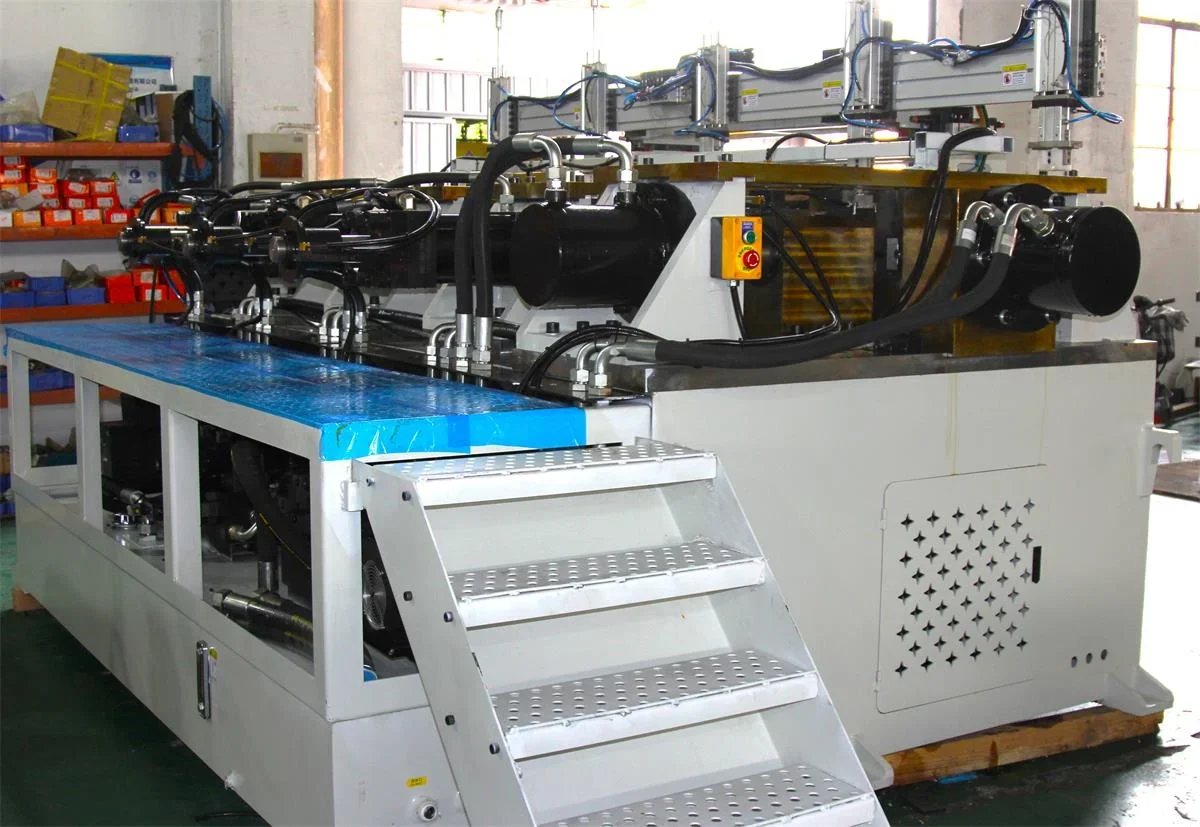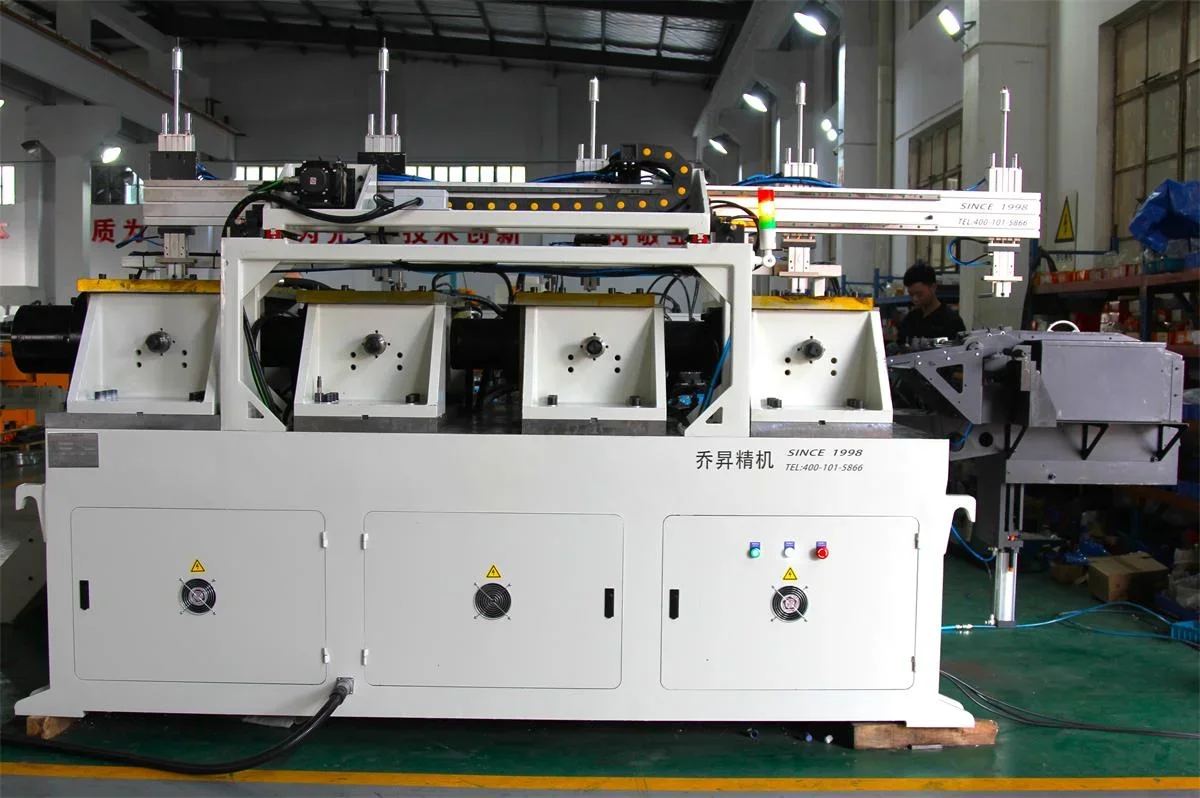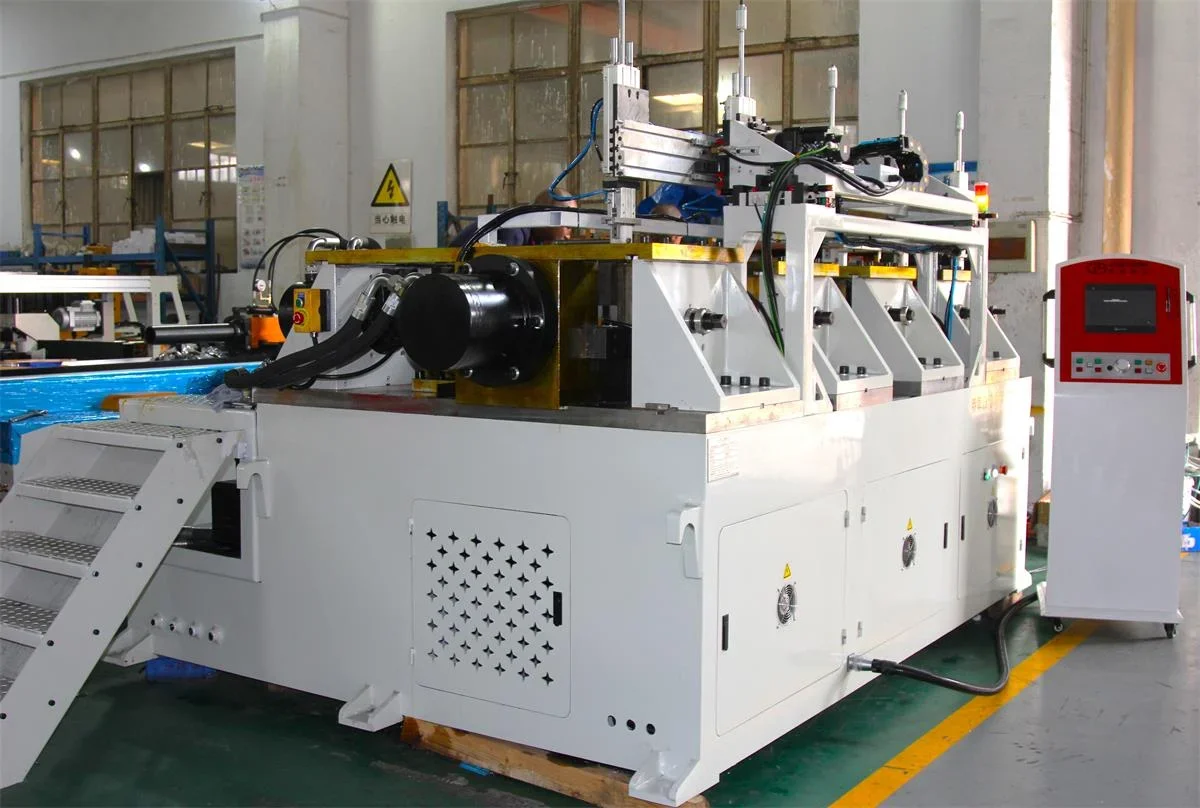Automatic CNC (Computer Numerical Control) pipe end forming machines have revolutionized the pipe fabrication industry, offering precise and efficient shaping of pipes for various applications. To ensure optimal performance and extend the lifespan of these machines, proper maintenance and troubleshooting practices are essential. In this article, we will explore key maintenance tips and troubleshooting techniques for automatic CNC pipe end forming machines, helping operators minimize downtime, enhance productivity, and achieve high-quality results.

I. Regular Maintenance Practices
1.Lubrication:
Proper lubrication is crucial for the smooth operation of automatic CNC pipe end forming machines.
Follow the manufacturer's guidelines to identify the recommended lubrication points and intervals.
Use high-quality lubricants to minimize friction, reduce wear and tear, and maintain machine performance.
2.Cleaning:
Regularly clean the machine's components, including the clamps, forming tools, and hydraulic systems, to prevent the buildup of debris or contaminants.
Use appropriate cleaning agents and tools to ensure thorough cleaning without damaging sensitive parts.
Pay special attention to areas prone to accumulation of debris, such as the cutting area and chip collection systems.
3.Inspection:
Conduct routine inspections of critical components, such as the hydraulic system, electrical connections, and tooling.
Look for signs of wear, loose connections, or damage that may affect the machine's performance.
Replace any worn-out or damaged parts promptly to prevent further issues and potential breakdowns.
4.Calibration and Alignment:
Periodically check and calibrate the machine to ensure accurate and precise end forming results.
Verify the alignment of the bending tools, clamps, and other components, making adjustments as necessary.
Regular calibration helps maintain consistent quality and reduces the need for rework.

II. Troubleshooting Techniques
1.Insufficient or Excessive Forming:
If the pipe end forming is insufficient or excessive, check the forming tool's position and adjustment.
Ensure the tooling is properly aligned and adjusted according to the required specifications.
If necessary, refer to the machine's user manual or consult with the manufacturer for guidance on proper tooling setup.
2.Poor Quality or Inconsistent End Forming:
Inconsistent or poor-quality end forming can be caused by various factors, including worn-out tooling, improper lubrication, or incorrect machine settings.
Regularly inspect the forming tools for signs of wear and replace them when necessary.
Verify that the lubrication system is functioning correctly, and apply the recommended lubricants.
Check and adjust the machine settings, such as pressure, speed, and feed rate, to ensure consistent and high-quality end forming.
3.Machine Vibrations or Unusual Noises:
Vibrations or unusual noises during machine operation may indicate loose components, misalignment, or worn-out parts.
Conduct a thorough inspection of the machine, paying attention to fasteners, belts, and bearings.
Tighten any loose components and replace worn-out parts as needed.
If vibrations persist, consult with the manufacturer or a qualified technician for further investigation.
4.Hydraulic System Issues:
Hydraulic system problems can affect the performance of automatic CNC pipe end forming machines.
Regularly inspect hydraulic hoses and connections for leaks or damage.
Monitor hydraulic fluid levels and replace or replenish as necessary.
If the hydraulic system exhibits any issues, such as slow operation or inconsistent pressure, consult with a hydraulic specialist to identify and resolve the problem.
5.Electrical or Control System Malfunctions:
Electrical or control system malfunctions can disrupt the operation of automatic CNC pipe end forming machines.
Inspect electrical connections and wiring for loose connections or damaged cables.
Check the control system for error messages or abnormal behavior.
If electrical or control system issues persist, consult with a qualified electrician or the machine manufacturer for assistance.

Conclusion
Proper maintenance and effective troubleshooting are vital for ensuring the optimal performance and longevity of automatic CNC pipe end forming machines. Regular lubrication, cleaning, inspection, and calibration help prevent breakdowns and maintain consistent quality. Troubleshooting techniques, such as addressing insufficient or excessive forming, poor quality results, vibrations or unusual noises, hydraulic system issues, and electrical or control system malfunctions, assist in resolving issues promptly and minimizing downtime. By following these maintenance and troubleshooting tips, operators can maximize the productivity and efficiency of automatic CNC pipe end forming machines, ultimately leading to high-quality end-formed pipes for various industrial applications.
As a professional pipe processing equipment manufacturer, John Sheng has been deeply involved in this field for 30 years from 1998 to now. So far, we have obtained more than 40 invention patents and accumulated manufacturing experience in various non-standard pipe processing equipment. We have provided customized solutions to more than 1,000 customers in more than 30 countries around the world.
If you are looking for professional commercial pipe processing equipment solution,welcome to contact us.
Email:[email protected]
